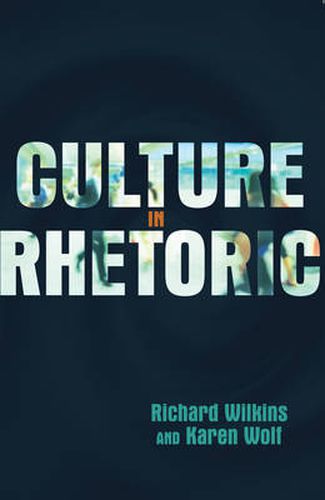Readings Newsletter
Become a Readings Member to make your shopping experience even easier.
Sign in or sign up for free!
You’re not far away from qualifying for FREE standard shipping within Australia
You’ve qualified for FREE standard shipping within Australia
The cart is loading…






Richard Wilkins and Karen Wolf present an innovative look at the relationship between rhetoric and the ethnography of communication.
They argue that a situated rhetoric extends beyond the study of public discourse to include moments of identification that are used in a situated, social, and cultural way. The main problem the book addresses is the idea that individuals use situated rhetoric to accomplish communal identification, even at the risk of multiple interpretations from others.
Culture in Rhetoric draws on case studies exploring argumentation through speaking and silence over the use of Native American land; asynchronous communication active in the cultural frames of a CBS 60 Minutes episode; identity and communication at a Jewish havurah; optimal forms of communicative conduct in Britain; and the changes in education communication of a North American college.
Wilkins and Wolf present the position that the context, form, and meaning of these situated instances of rhetoric provide a foundation upon which to analyze the communicative constructions of cultural identity.
$9.00 standard shipping within Australia
FREE standard shipping within Australia for orders over $100.00
Express & International shipping calculated at checkout
Richard Wilkins and Karen Wolf present an innovative look at the relationship between rhetoric and the ethnography of communication.
They argue that a situated rhetoric extends beyond the study of public discourse to include moments of identification that are used in a situated, social, and cultural way. The main problem the book addresses is the idea that individuals use situated rhetoric to accomplish communal identification, even at the risk of multiple interpretations from others.
Culture in Rhetoric draws on case studies exploring argumentation through speaking and silence over the use of Native American land; asynchronous communication active in the cultural frames of a CBS 60 Minutes episode; identity and communication at a Jewish havurah; optimal forms of communicative conduct in Britain; and the changes in education communication of a North American college.
Wilkins and Wolf present the position that the context, form, and meaning of these situated instances of rhetoric provide a foundation upon which to analyze the communicative constructions of cultural identity.